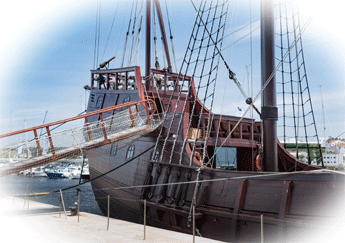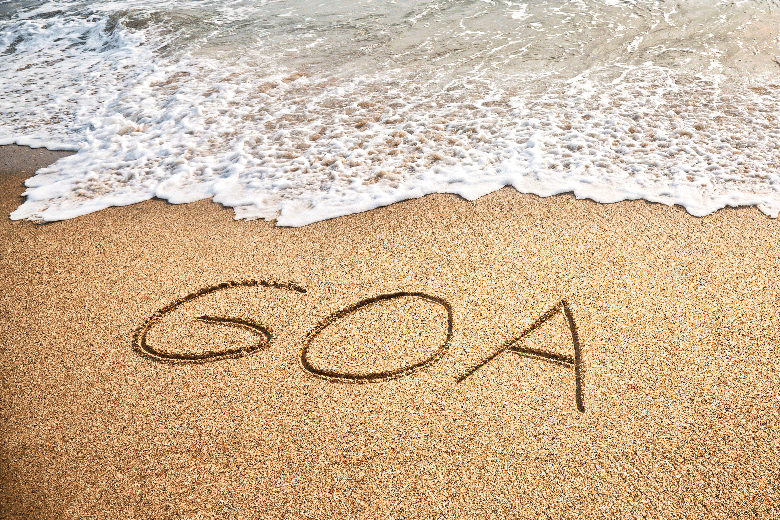Some background
In 1510, the Portuguese conquered Goa. The Portuguese general responsible for the conquest, Alfonso d’ Albuquerque, had been tasked with creating a permanent settlement in Gao. This was seen as necessary in Portugal, as the Portuguese wanted to protect their control of their lucrative spice trade. Before this, the Portuguese had been under attack by various coalition groups. The groups, including the Arabs, Venetians, Egyptians and the Ottomans, wanted to wrestle control of the European spice trade from Portugal. The Portuguese resisted and sent different armadas to the region. Finally, after a series of battles, the Portuguese gained the upper hand in the region.
including the Arabs, Venetians, Egyptians and the Ottomans, wanted to wrestle control of the European spice trade from Portugal. The Portuguese resisted and sent different armadas to the region. Finally, after a series of battles, the Portuguese gained the upper hand in the region.
The time had come to create a permanent settlement in the area to protect their interests. Realising the Portuguese needed a port city as a capital, General d’ Albuquerque captured Goa from the Sultan of Bijapur.
With the capital in place, Albuquerque started creating infrastructure. He created infrastructure, including setting up the first mint in Goa, and a school for settlers. To gain favour with the local population, he lowered taxes. The scene was set for the Portuguese colonisation of Goa, which was to last for over four hundred and fifty years
Food Fusion

Food in Goa
After the invasion of Goa, many Portuguese settlers arrived in India. With them came food ingredients that had never been seen in Goa before. These ingredients included Chillies, potatoes, tomatoes and vinegar. Soon these ingredients were being used in local cuisine to create fusion dishes that were partly Portuguese, but with Goan influences.
The Goan adaptation of Portuguese cuisine had a lot to do with spicing. Portuguese cooking was not particularly spicy. However, this was to change in Portuguese Goa. Dishes like Vinha d’alhos (meat and garlic) from Madeira and the Azores were adapted to local tastes. Ingredients like Chillies and vinegar were added to this dish to arrive at what is now known as Vindaloo. Similarly, dishes like Moqueca from Brazil were adapted to local tastes with spices to create dishes like Caldin
Portuguese Goa. Dishes like Vinha d’alhos (meat and garlic) from Madeira and the Azores were adapted to local tastes. Ingredients like Chillies and vinegar were added to this dish to arrive at what is now known as Vindaloo. Similarly, dishes like Moqueca from Brazil were adapted to local tastes with spices to create dishes like Caldin
Both the Portuguese and the Goans shared a fondness for seafood. With its long coastline, Goa could satisfy this love of this type of cuisine with ease. Fish like Kingfish, shark, tuna, promfret, sardines and mackerel found their way into Portuguese seafood dishes. There was also an abundance of shellfish. With such a variety of ingredients, dishes like Prawn balchao (a spicy prawn pickle), Fish Recheado, Goan Fish curry, Shark Ambot Tik and Crab Xacuti (crab curry) began appearing on tables in the region.
Yet other Portuguese influence on Goan cuisine includes dishes like Chicken Xacuti, Goan Feijoada (a traditional Brazilian dish spiced up with Chillies, spices and Goan Choris), Cafreal (spicy Goan fried chicken), Caldeirada (spicy Goan seafood stew) and Pork Assado ( Goan pork roast), Pork Baffat (pork curry) and Pork Indad (sweet and savoury pork belly stew)
Other Influences

Two types of Goan food
Besides the Portuguese’s influence on the food in Goa, elements from other cultures can be found in Goan cuisine. Arab, Brazilian, African, French, Konkani, Malabar, Malaysian, and Chinese influences contributed to making the fine cuisine Goa is known for today.
The cuisine is divided into two distinct categories. One category is known as Christian Goan food, the other as Hindu Goan food. The two styles of cooking are distinctly different in the ingredients they use. Hindus, for example, do not eat pork, so you wouldn’t find this meat in their dishes. Other differences include the use of Kokum in Hindu cooking to achieve sourness. Christian Goan cooking uses vinegar (e.g. in Vindaloo) to achieve this result
wouldn’t find this meat in their dishes. Other differences include the use of Kokum in Hindu cooking to achieve sourness. Christian Goan cooking uses vinegar (e.g. in Vindaloo) to achieve this result
Goan cuisine, whether Hindu or Christian, shares one common trait. This trait is that much of Goan cuisine balances sweet/sour saltiness and spice. This is achieved by using ingredients like Kokum, tamarind, Chillies, Goan Malt vinegar, coconut milk, cashew nuts and Indian spices. These are combined with the much-loved seafood of the region (including clams, mussels, squid, octopus and crab), pork, chicken to make some excellent eating
A final note
The primary Chilli used in both the Christian and Hindu cooking styles is the Kashmiri Chilli. The Kashmiri Chilli is not only used for the subtle flavour it imparts, but also for the colour it provides to dishes. It, however, is not pungent at all. For this reason, Kashmiri Chillies are combined with other Goan Chillies to give heat to dishes. There are at least fifteen other varieties used in the food in Goa, but that is the subject of another post

